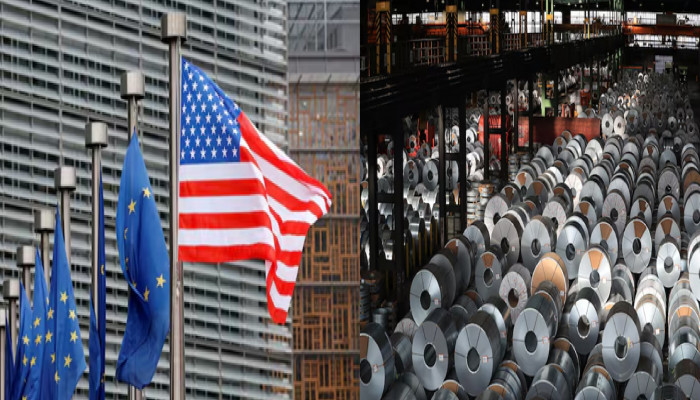EU to face $29.3 billion economic loss from Trump's steel, Aluminum tariffs
- In Reports
- 06:08 PM, Feb 22, 2025
- Myind Staff
The European Union estimates that Donald Trump's initial tariffs on steel and aluminium could impact up to €28 billion ($29.3 billion) worth of EU exports. This would mark a significant escalation in the U.S. president’s trade war.
According to sources familiar with the EU's analysis, the affected goods—including related metal products—could be about four times more than the last time Trump imposed tariffs on the EU’s metal sector. Following his meeting with his US colleagues in Washington, EU trade head Maros Sefcovic gave a debriefing to the bloc's ambassadors on Friday. According to the sources, who spoke on condition of anonymity, he issued a warning that the situation is unpredictable and that the specifics and extent of any tariffs could still change. As part of his plan to change global trade rules, Trump announced new tariffs, including a 25% tax on steel and aluminium exports, which could start as early as March 12. He also introduced reciprocal tariffs on countries whose trade policies are seen as unfair to the U.S.
The European Commission, which handles trade decisions for the EU, chose not to comment. The dispute between the EU and the US over metal tariffs began in 2018 during Trump’s first term. The US imposed tariffs on nearly $7 billion worth of European steel and aluminium, claiming it was necessary for national security. European officials, however, dismissed the idea that the EU could be a security threat. The U.S. first imposed tariffs of 25% on steel products and 10% on aluminium, with some exemptions for specific items. However, according to Bloomberg, this time there will be no exemptions.
In response, the 27-nation European Union hit back with its own tariffs, focusing on politically important U.S. companies. This included higher duties on Harley-Davidson motorcycles and Levi’s jeans. The EU’s countermeasures targeted various products, including agricultural goods, clothing, and metal products like steel and aluminium.
In 2021, both sides agreed to a temporary truce. The US eased some of its restrictions and introduced tariff-rate quotas, meaning extra duties would only apply if metal imports exceeded a certain limit. In response, the EU paused all its countermeasures. The EU has warned that if the US imposes new tariffs, it will respond swiftly and proportionally. As a first step, it may reinstate previously suspended tariffs. According to Bloomberg, the EU has prepared different lists of targeted goods and industries, focusing on areas that would impact the US the most, including key political regions. The European Commission has stated that these suspended tariffs, currently on hold until the end of March, can be quickly reactivated if necessary.
Sefcovic met with US Commerce Secretary Howard Lutnick, Jamieson Greer (his choice for US trade representative), and National Economic Council Director Kevin Hassett last week. According to sources, he told EU envoys that the meeting had a positive atmosphere, but no actual negotiations took place.
During the meeting, Sefcovic aimed to establish initial communication and clarify what he believed were false claims made by the US, such as the idea that Europe’s value-added tax is unfair to America. To prevent a trade conflict, he proposed a deal to his US counterparts to reduce tariffs on industrial goods, including cars—a key demand of former President Trump.







Comments